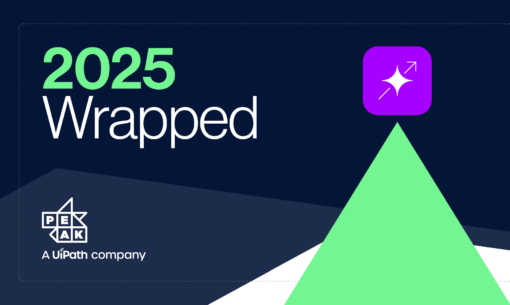AI-powered production planning: maximizing manufacturing efficiency
By Luke Dyer on November 25, 2024Manufacturers today are operating in an uncertain environment, dealing with geopolitical tensions, climate change and rising costs.
This means it’s more important than ever for manufacturers to find ways of improving efficiency and controlling costs.
Current production planning methods can be highly time consuming, relying on manual or rules-based processes that are inefficient, ever-changing and prone to human error.
Traditional production planning struggles to accommodate dynamic factors like changing demand, limited warehouse capacity, fluctuating raw material availability and varying production capacity. With demand difficult to predict and production levels difficult to adjust, common issues include overproduction and waste, or stockouts and missed sales.
Introducing AI-powered Production Planning from Peak
Production Planning is a key new capability within Peak’s Inventory AI product. It bridges the gap between finished goods inventory management (Dynamic Inventory), raw material management (Reorder) and the effective stocking of products.
What does Peak’s Production Planning software do?
Production Planning generates AI-powered production plans, with intelligent machine learning algorithms determining precisely what to manufacture, how much and when. These take into account business-specific guardrails and processes, as well as highly-relevant factors, such as demand forecasts, stock levels, production capacity and production cycle times.
It allows businesses to optimize their production efficiency, recommending daily or weekly production quantities and providing product prioritization suggestions — all aimed at enabling manufacturers to meet customer demand while minimizing their stock holding costs. With a customizable planning window that extends months in advance, businesses can effectively manage raw material procurement, labor planning and other preparations.

What are the benefits of Production Planning?
Production Planning ensures that the right products are available at the right time, improving service levels and ensuring customer expectations are met in the most efficient way. And, by reducing wastage that occurs through overproduction and missed sales from underproduction, manufacturers will benefit from increased profit margins and more sustainable production processes.
It also keeps manufacturers one step ahead of their competition, ensuring that customer demand can be met ahead of competitors. Increased agility from AI-powered production planning means that businesses can quickly adapt to changing demand and gain a competitive advantage.
How does Production Planning work?
This exciting new Inventory AI capability leverages sophisticated machine learning algorithms to analyze historical data, current real-time signals and a wide range of external factors to produce accurate demand forecasts and optimal production recommendations. Its key features include…
- AI-powered recommendations: Peak’s AI provides clear guidance on production quantities, schedules and product prioritization
- Configurable planning: Businesses can set the granularity of their production plans (daily or weekly) and customize the planning horizon to align with their specific needs
- Easy-to-use interface: The intuitive interface provides visibility into key production KPIs, allowing users to easily monitor and adjust plans
- Seamless integration: Production Planning integrates directly with existing ERP and other business systems for streamlined data flow and execution
Peak’s Production Planning capabilities empower manufacturers to move beyond outdated and inefficient planning methods. By harnessing the power of AI, businesses can now optimize their production processes, improve service levels, reduce waste and ultimately drive greater profitability.
See AI for Production Planning in action
Get in touch to set up a quick demo with our team of specialist Inventory AI experts.
FAQs
What is production planning software in manufacturing?
Production planning software helps manufacturing companies figure out how much stock to make, taking into account various factors such as fluctuating demand, changing stock levels, unpredictable lead times, warehouse capacity and much more.
This type of software is becoming increasingly essential for any company that manufactures its own goods, because it allows them to create a production plan that ensures they can meet demand without under or overproducing. In short, production planning software creates a data-driven production plan to assist with decisions on what to produce, how much and when.
What’s the difference between production planning and production scheduling?
Production planning focuses on the “what” and “how much” of production, while production scheduling deals with the “how” and “when”.
Imagine a bakery that produces different types of bread. Production planning would determine how many loaves of each type of bread to bake each day, considering factors such as:
- Predicted demand for each type of bread
- Available ingredients and their lead times
- The bakery’s overall production capacity
- The desired level of stock to hold for each type of bread
The production plan might state that the bakery should produce 500 loaves of white bread, 300 loaves of whole wheat bread, and 200 loaves of rye bread on a specific day.
Production scheduling, on the other hand, would then take this plan and break it down into more detailed instructions, such as:
- Which ovens to use for each type of bread
- The order in which to bake the different types of bread to minimize changeover times
- The specific start and end times for baking each batch of bread
The production schedule would dictate that the white bread should be baked first in oven #1, followed by the whole wheat bread in oven #2 and finally the rye bread in oven #1 again. The schedule would also specify the exact times for mixing the dough, proofing the loaves, and baking them.
More from Peak




